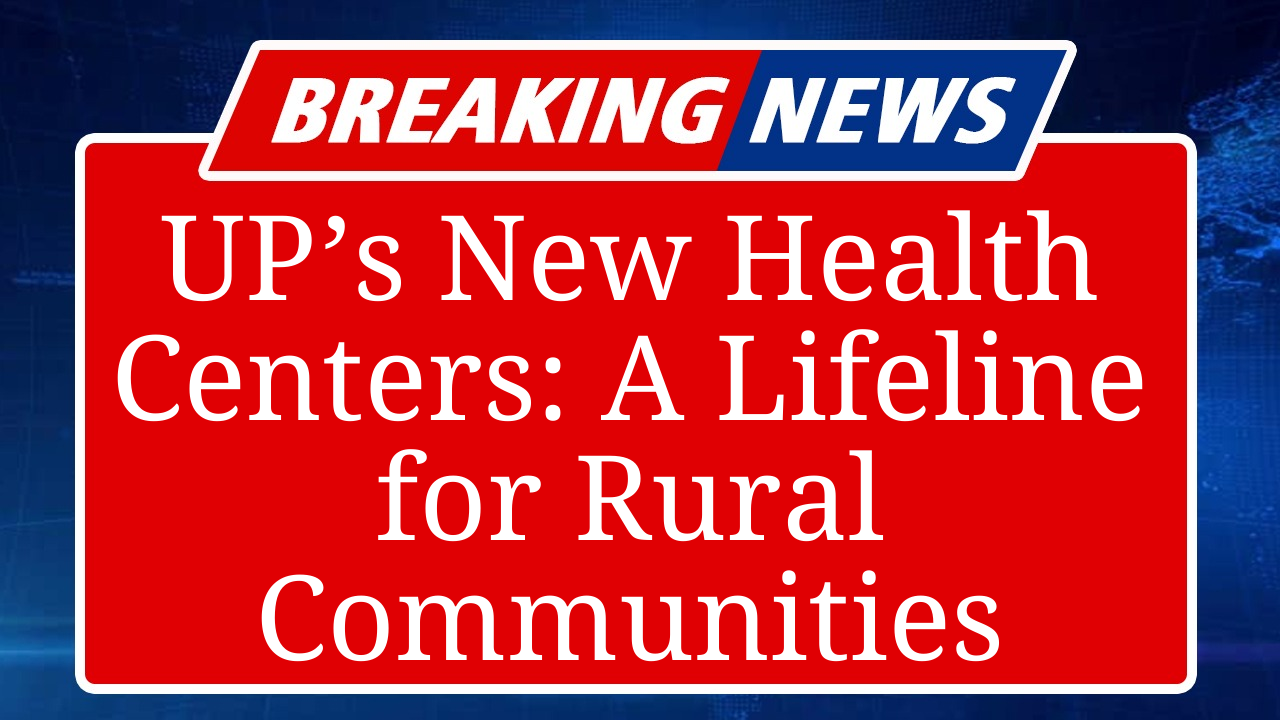“Uttar Pradesh is enhancing rural healthcare by establishing new health centers to address gaps in medical access. These facilities aim to improve primary care, maternal health, and emergency services in underserved areas. Despite progress, challenges like staffing shortages and infrastructure limitations persist, raising questions about sustainability.”
Uttar Pradesh Expands Rural Healthcare Network
In a significant push to improve healthcare access in rural Uttar Pradesh (UP), the state government has launched a series of new health centers across remote districts. As of September 2025, the UP Health Department has inaugurated over 150 new primary health centers (PHCs) and community health centers (CHCs) in the past year, targeting regions with historically poor medical infrastructure. This initiative aligns with the National Health Mission’s goal to bridge the urban-rural healthcare divide, where rural residents often face long travel distances and inadequate facilities.
Data from the UP Health Department indicates that these new centers have increased the state’s rural healthcare capacity by 12%, with a focus on districts like Bahraich, Shravasti, and Balrampur, which have high poverty rates and low doctor-to-patient ratios. Each center is equipped to provide basic diagnostics, maternal and child health services, and emergency care, with some facilities offering telehealth to connect patients with specialists in urban hubs. For instance, the new CHC in Shravasti’s Ikauna block has already facilitated over 2,000 teleconsultations since its opening in March 2025, according to local health officials.
The state has also invested ₹500 crore in upgrading existing PHCs, adding beds, and installing solar-powered equipment to ensure functionality in areas with unreliable electricity. This is critical in UP, where 65% of the population resides in rural areas, and only 1.2 doctors are available per 1,000 people, far below the World Health Organization’s recommended ratio of 1:1,000. The new centers aim to reduce preventable deaths from diseases like tuberculosis and maternal complications, which remain prevalent in rural UP.
However, challenges loom large. Health experts point out that staffing shortages continue to plague these facilities. A 2024 report by the Public Health Foundation of India noted that 30% of PHC posts in UP remain vacant, particularly for specialists like gynecologists and pediatricians. Training programs for auxiliary nurse midwives (ANMs) and community health workers are underway, but local reports suggest that many centers still rely on underqualified staff, compromising care quality. Infrastructure issues, such as poor road connectivity, also hinder access, especially during monsoons, when rural patients struggle to reach even nearby facilities.
The state government has partnered with private organizations to address these gaps. For example, a collaboration with the Tata Trust has introduced mobile health vans in 10 districts, offering diagnostic services and vaccinations. These vans have served over 50,000 patients since January 2025, per government data. Additionally, the Ayushman Bharat scheme has been integrated to provide free treatment to economically disadvantaged families, with 1.2 crore rural beneficiaries enrolled in UP as of August 2025.
Critics, however, argue that the pace of progress is uneven. In districts like Chitrakoot, residents report that new centers lack essential medicines and diagnostic tools, forcing patients to travel to urban hospitals. A recent survey by the UP Rural Health Association found that 40% of rural patients still prefer private clinics due to perceived inefficiencies in government facilities. Moreover, the financial sustainability of these centers is under scrutiny, as maintenance costs and staff salaries strain state budgets.
The central government’s recent $50 billion rural health fund, announced in July 2025, could provide relief, but UP’s share remains unclear. Health Minister Brajesh Pathak emphasized that the state is lobbying for a significant allocation to bolster its rural health network. Meanwhile, local communities hope these centers will reduce the healthcare disparities that have long plagued rural UP, where life expectancy is three years lower than urban areas, according to a 2024 CDC report.
Disclaimer: This article is based on recent news, government reports, and public health data available as of September 2025. Information is sourced from the UP Health Department, Public Health Foundation of India, and credible media outlets. Readers are advised to verify details with official sources.

